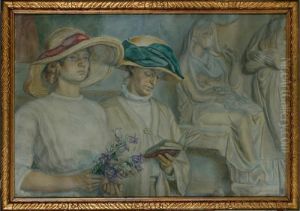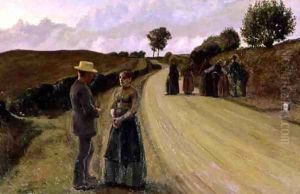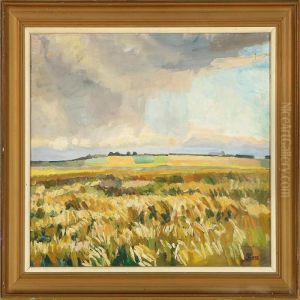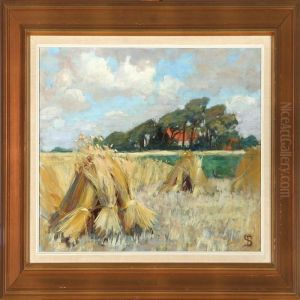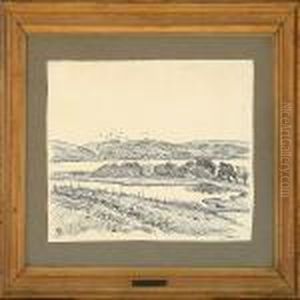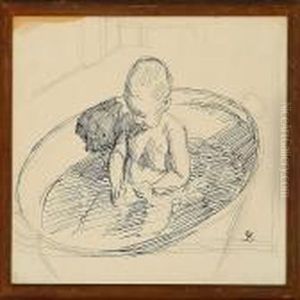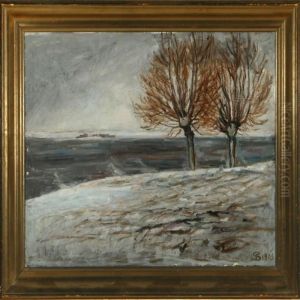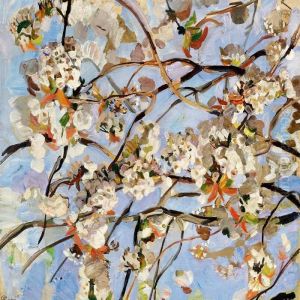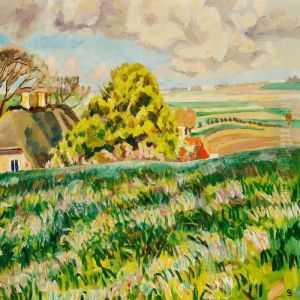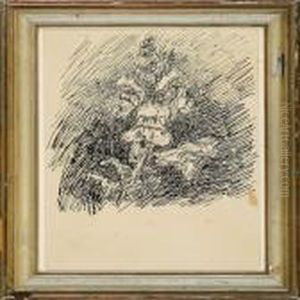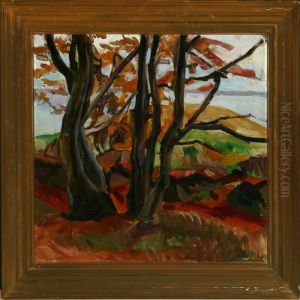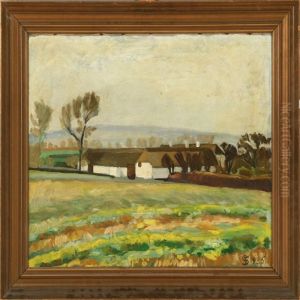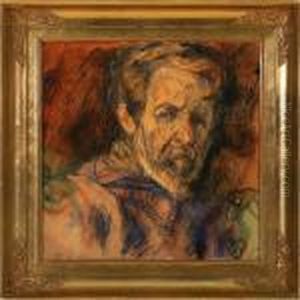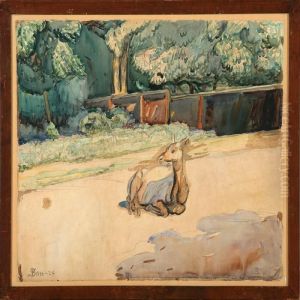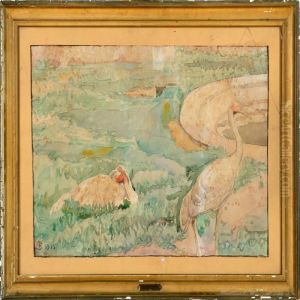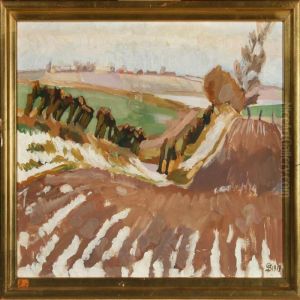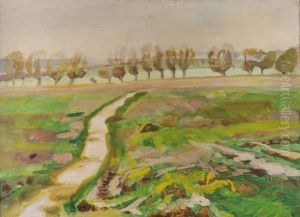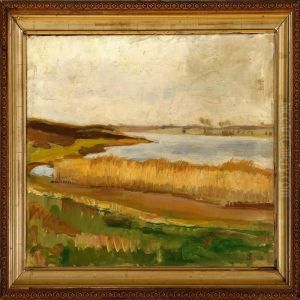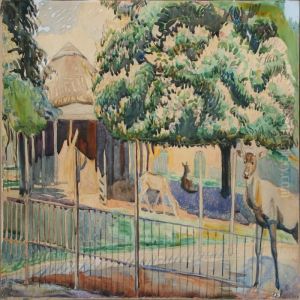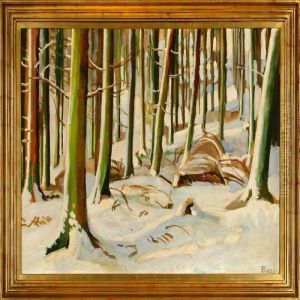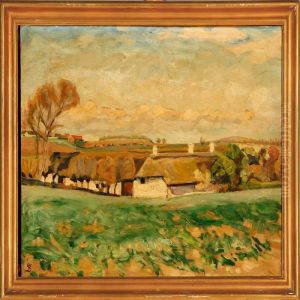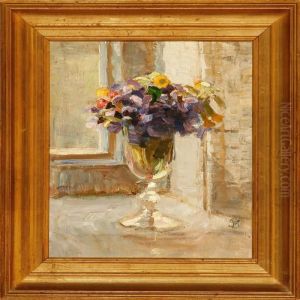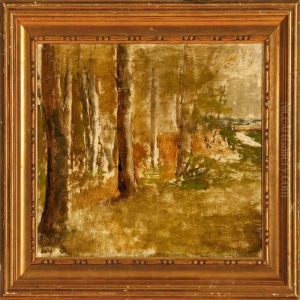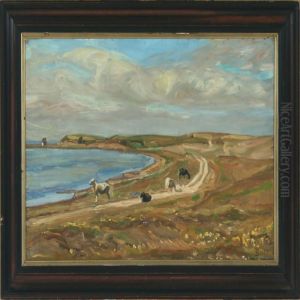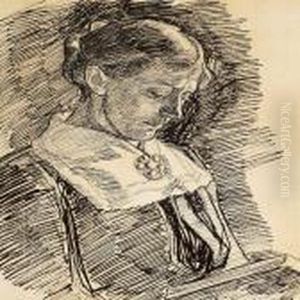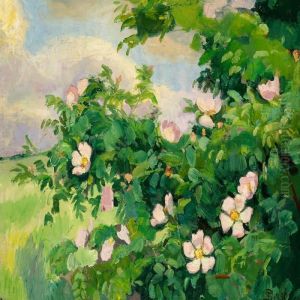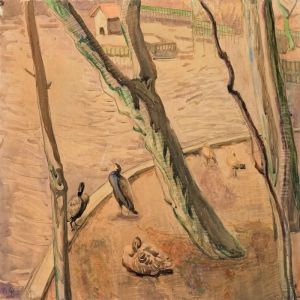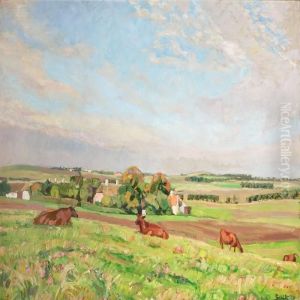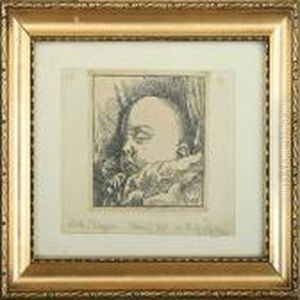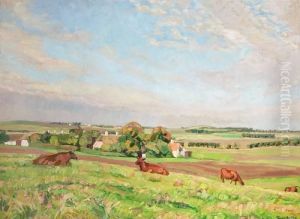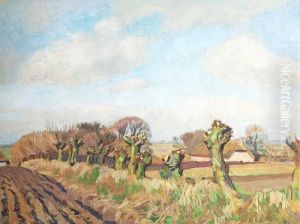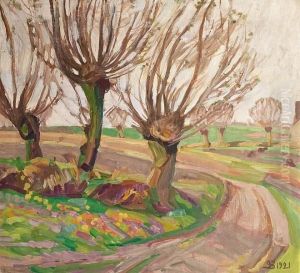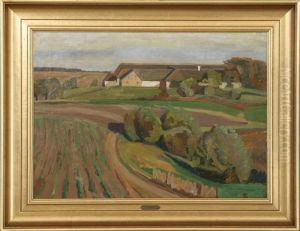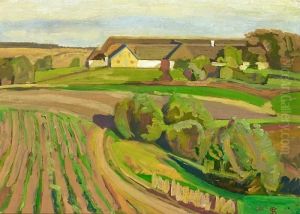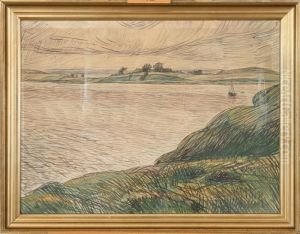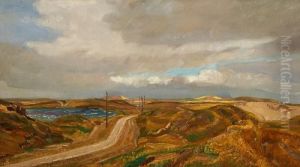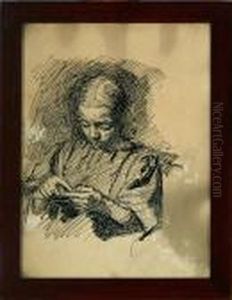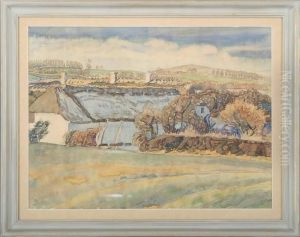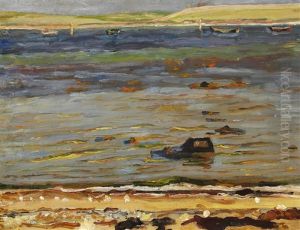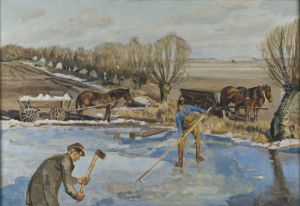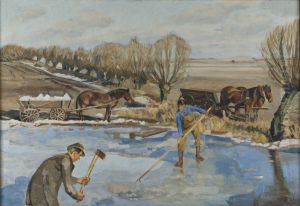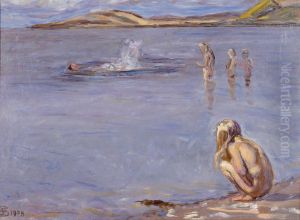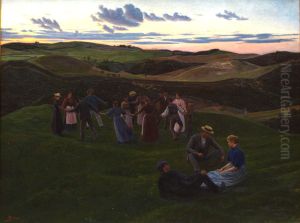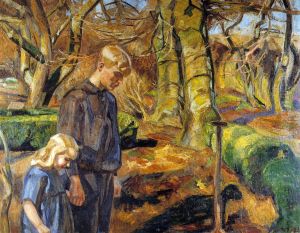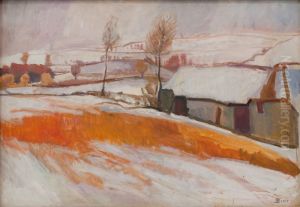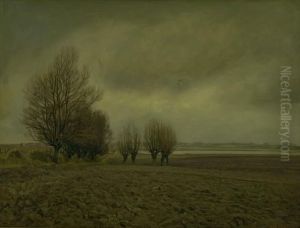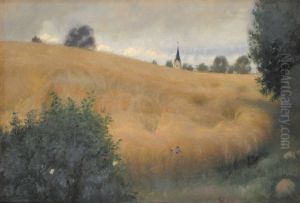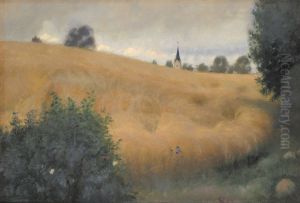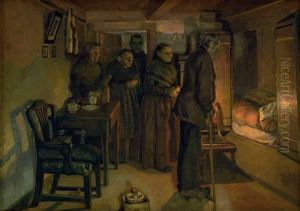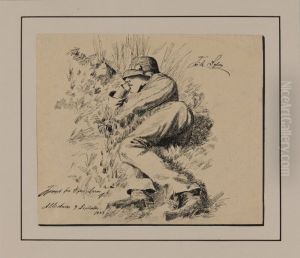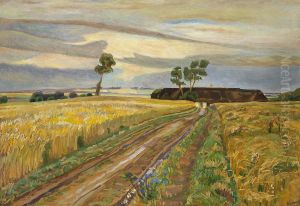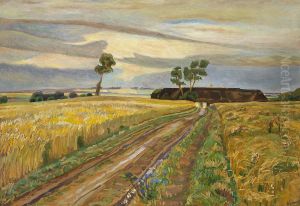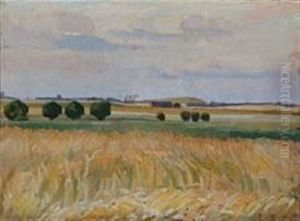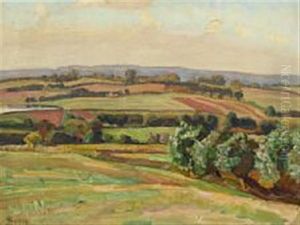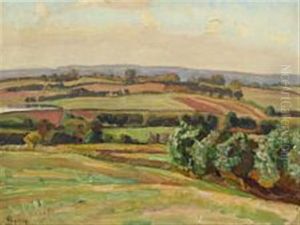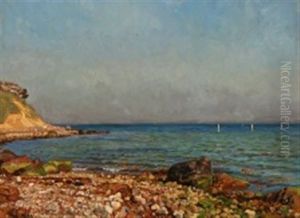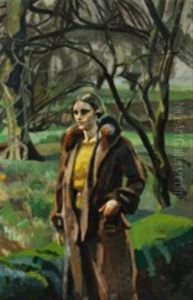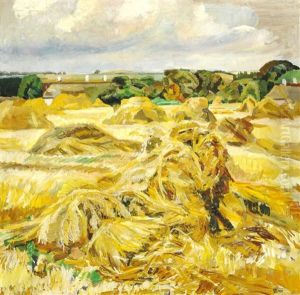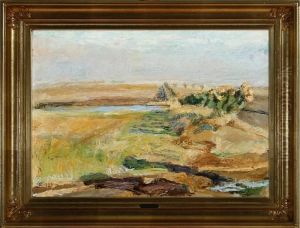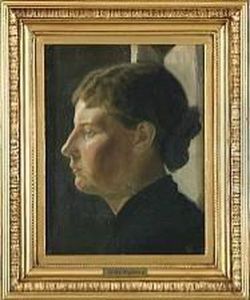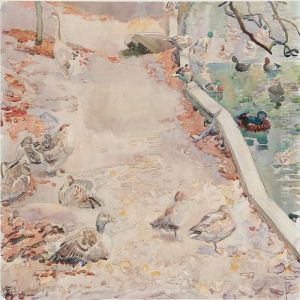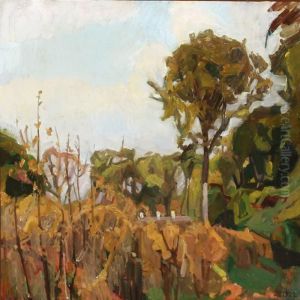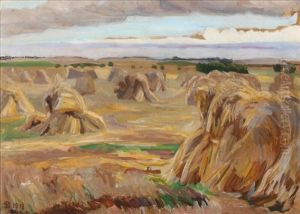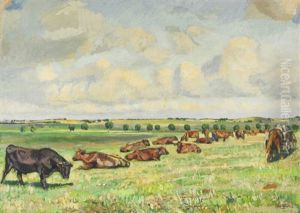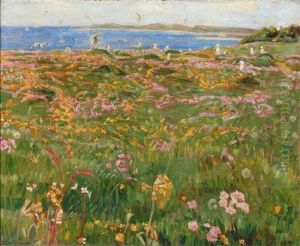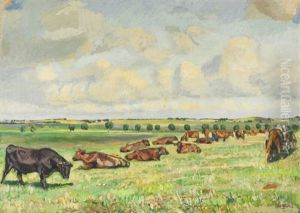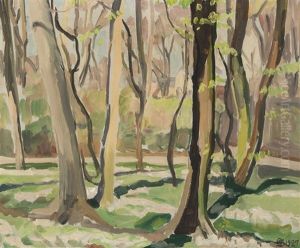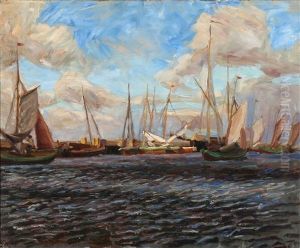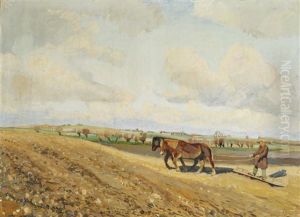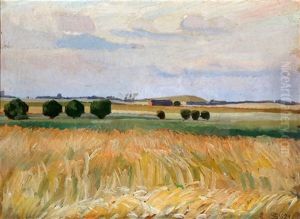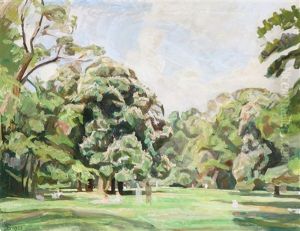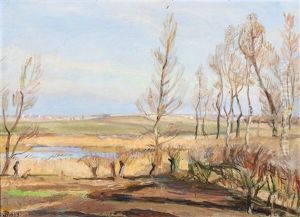Fritz Syberg Paintings
Fritz Syberg was a Danish painter, illustrator, and writer, known for his participation in the Danish artistic community known as the Funen Painters (Fynboerne), a group of artists who lived and worked on the island of Funen. Syberg was born on July 28, 1862, in Faaborg, Denmark, and he became one of the central figures in the Funen art colony, which sought to capture the unique light and landscape of the island, much like the French Impressionists did with their surroundings.
Syberg received his artistic training at the Royal Danish Academy of Fine Arts in Copenhagen where he studied from 1882 to 1886. However, it was his return to Funen and the subsequent meetings with fellow artists Peter Hansen and Johannes Larsen that marked the beginning of the Funen Painters’ movement. The group's work was characterized by a deep appreciation for the natural beauty of the Danish countryside and rural life. They often painted en plein air, a practice of painting outdoors that allows for the direct capture of light and atmosphere.
Throughout his career, Fritz Syberg created works that depicted the simple life of country folk, landscapes, and family life. He was particularly noted for his ability to portray children and scenes of domestic life with sensitivity and a sense of immediacy. His style evolved over the years, showing influences from Impressionism to more structured compositions.
In addition to painting, Syberg also worked with ceramics and textiles, and he illustrated books, including classics of Danish literature. His talents extended to writing poetry and music as well, making him a versatile and well-rounded artist of his time.
Syberg married twice, first to the painter Anna Syberg, with whom he had several children, some of whom also became artists. After her death, he married her sister, the painter Marie Syberg. The family element was deeply influential in his work, often serving as subjects for his paintings.
Fritz Syberg's legacy is preserved at the Faaborg Museum, which holds a significant collection of his works, and his influence is recognized in the history of Danish art. He passed away on December 20, 1939, leaving behind a body of work that continues to be celebrated for its portrayal of the Danish landscape and the simple beauty of everyday life.
